The Fujinon XF 18mm F2.0 R Lens For The Fuji X-Pro1:
As of now, there are only two lenses on the market that you can purchase with your Fuji X-Pro1. One is the XF 35mm F1.4, which seems to be the hot lens for the X-Pro1 now. The other is the XF 18mm F2.0 R lens (B&H Photo/Amazon), which is the wide angle sibling of the 35mm. If you could only buy one lens for your X-Pro1, which one should you buy?
Well, some people who are buying the X-Pro1 are overlooking the XF 18mm F2.0 R lens, and purchasing the XF 35mm F1.4 R lens instead. You can’t blame them. The 35mm is a great lens for the X-Pro1: it’s very sharp, it’s contrasty, and it has a super fast F stop of 1.4. Hey, even for me, the first lens that I wanted to test out was the 35mm F1.4. Check out my XF 35mm F1.4 R lens review if you haven’t had a chance yet. You’ll see what I mean.
But while the 35mm F1.4 is a great lens, I don’t think that the 18mm should be dismissed so easily as a first choice for the X-Pro1. First off, this lens’ equivalent focal length when mounted on the X-Pro1 is approximately a 27mm. This is a classic focal length many rangefinder users are use to because it is ideal for photojournalistic and candid street photography. Because of it’s wide angle feel, the 18mm forces you to get closer into the action. This is a great street lens because you can fill the frame, and make it feel like you’re part of the action. The X-Pro1 paired with the 18mm make a great combo because together, you get a small, lightweight, and versatile package that delivers great images in its own right.
Fujinon XF 18mm F2.0 R Lens Build Quality:
Build quality is overall good but like the rest of the Fuji X-Pro1 system, the XF 18mm F2.0 R lens is light. In fact, the 18mm is the lightest of the lenses weighing in at only 116g. Because of this lightness, the 18mm F2.0 feels a bit hollow if not more so than the 35mm F1.4 because of the sheer lightness and small size. This was a bit of a disappointment because while I wasn’t expecting Leica heft, I was expecting some heft. However, while the 18mm F2.0 is not quite up to Leica quality standards, you’re only paying $599 versus the Leica equivalent, which will cost you over $4000. Plus, even if you had the four grand, you actually have to find the Leica version.

↑ The XF 18mm F2.0 R lens attached to the Fuji X-Pro1.
While the XF 18mm F2.0 R lens (B&H Photo/Amazon) is a bit light for my taste, there is no denying the fact that it is still built very well. There are no rattles, no loose parts, and the aperture ring clicks very nicely, and securely (if not a little light feeling) in 1/3 stop increments. The 18mm F2.0 XF lens does feel very solidly put together. The focusing ring is smooth but lacks feeling similar to the XF 35mm F1.4 but then again, most people are probably going to use the autofocus on the X-Pro1 almost exclusively. That’s how I shoot with the X-Pro1 at least.

↑ Side view of the XF 18mm F2.0 R lens.
When mounted on the Fuji X-Pro1, the combo makes for a very lightweight, compact, versatile, and stealthy system capable of producing great photographs. The XF 18mm F2.0 R lens is nicely balanced on the camera body, and this is the lens that I would choose if I needed to be as discreet as possible. When this lens is mounted on the X-Pro1, people rarely notice that I’m carrying my camera around, especially since the X-Pro1 is so discreet looking already. You can easily hide the camera inside your jacket, and leave your bag at home. Plus, this is where the lightness of the X-Pro1, and particularly the 18 F2.0 are really an added benefit. With 18mm mounted on the X-Pro1, you can shoot all day without any fatique.
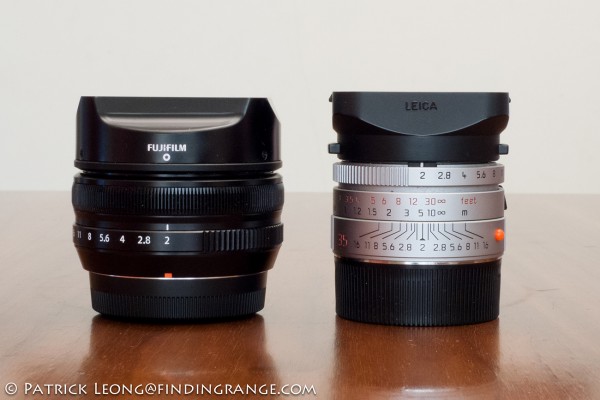
↑ Side by side comparison between the XF 18mm F2.0 R lens and 35 Summicron ASPH.
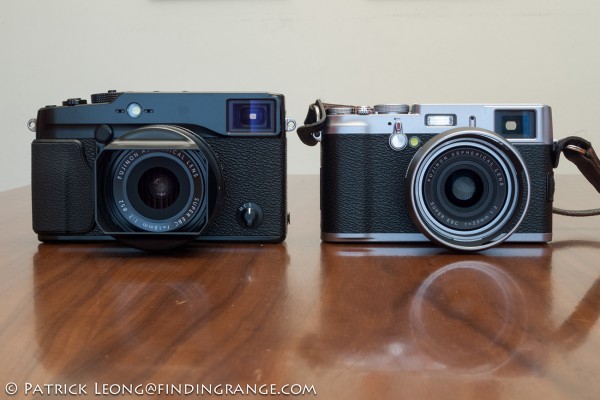
↑ Side by side comparison between the Fuji X-Pro1 with XF 18mm F2.0 R lens mounted and the Fuji X100.
Fujinon XF 18mm F2.0 R Lens Sharpness, Detail, And Contrast:
This lens, while not optically superior to the XF 35mm F1.4 R lens, is still great in its own right. It’s not the sharpest lens that I’ve ever used but it’s still very sharp. Contrast is nice. Colors have a nice smooth, deep and rich tone to them that makes photos come out very nicely.

↑ This photo did come straight out of the X-Pro1 but I converted the jpeg into black and white with Nik Software Silver Efex Pro 2.

↑ Nice Fuji colors, and three dimensionality.
I would say that when shot wide open, sharpness is better on center than on the outer edges but it shouldn’t be such a problem if you’re shooting wide open, since you have a shallower depth of field anyway. As you stop down, sharpness does increase especially in the center of the frame. But sharpness on the edges will never be as good as on center. I am nitpicking a little bit but this is a review, and I want to be completely honest.
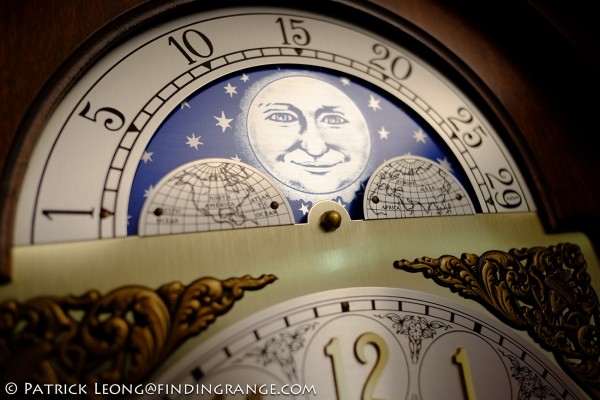
↑ Macro shot with the X-Pro1 and XF 18mm F2.0 R lens at 1/30 of a second wide open.
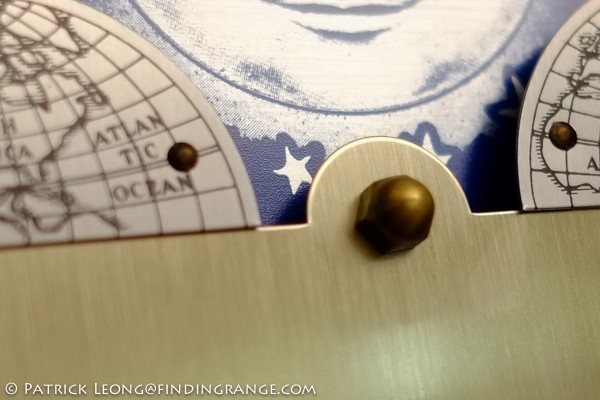
↑ 100% crop of the clock photo above. Check out the blue area in the center. The 18mm is still a very sharp lens.

↑ Here is another photo demonstrating the XF 18mm F2.0 R lens’ sharpness.
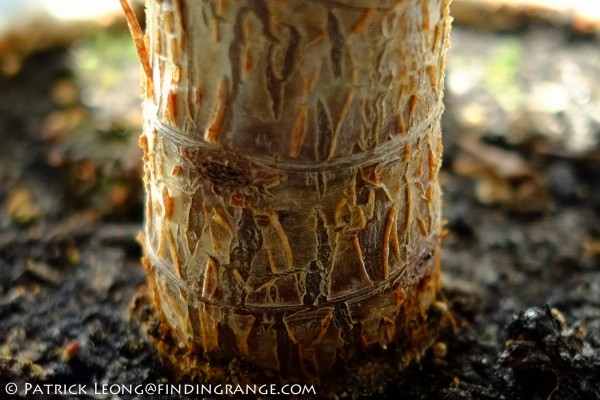
↑ 100% crop of the photo above.
However, in practice and in use, these issues are not so much of a problem. The photos coming from this lens all have that same Fuji signature, and three dimensionality that we’ve all grown to love from the X100, and now the X-Pro1. Overall, while the XF 35mm is a better lens optically, I am still very pleased with the images that I can get from the XF 18mm F2.0 R lens. It’s also a real joy to use.
↑ Central Park on a very bright day shot at F5.6.
↑ Photo of the Verrazano Bridge and a jogger shot at F8. I love how the X-Pro1 renders blues.
↑ 100% crop of the photo above.
↑ Another 100% crop.
Fujinon XF 18mm F2.0 R Lens Bokeh:
Bokeh from the XF 18mm F2.0 R lens will never be as good as the XF 35mm F1.4 R lens because it’s a wider angle, and the 35mm is a stop faster. But its still nice, and smooth for a lens of its class. There are no distracting shapes, and the bokeh is not so soft that it completely distracts a person away from the main subject. The main subject is always sharp, which is what I prefer. I was actually quite pleasantly surprised because to tell you the truth, I wasn’t expecting such nice pleasing shallow depth of field coming out of the 18mm. The bokeh never looks overdone. It’s always just right.
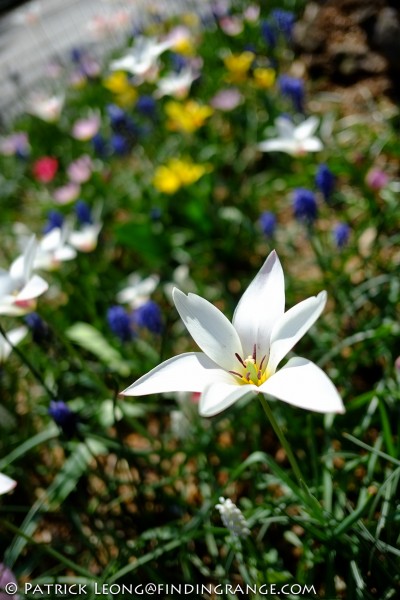
↑ Bokeh from the 18 F2.0 XF lens is never messy or distracting. It’s actually quite pleasing and smooth.
Macro With The Fujinon XF 18mm F2.0 R Lens:
One thing that I’m just loving about the Fuji X-Pro1 is the ability to use the macro mode with all of the lenses. I wasn’t a big fan of my 28 Elmarit ASPH, which is why I sold it pretty fast. It was a great little lens but I always felt as if I couldn’t get close enough with it. With the XF 18mm F2.0 R lens (B&H Photo/Amazon) I can get close enough to my subject because I can put the X-Pro1 in macro mode. I believe that’s why I actually like using the 18mm a bit more with the X-Pro1 versus my 28 Elmarit with my M9. I’m still not the biggest fan of the 28mm focal length. But when I had my 28 Elmarit ASPH, I didn’t use it at all. I always took out my 35 cron instead because I sometimes felt that I had too much empty space with the Elmarit.
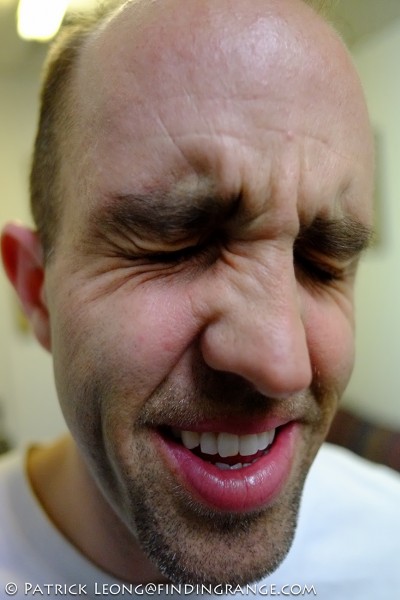
↑ I used the macro mode on the X-Pro1 to distort the face a bit :).
For me, photography is suppose to be fun. Otherwise, I would’ve stuck to Pharmacy school :). I love being able to exploit some of the perspective error that’s inherent in a wide angle lens, such as, the XF 18mm F2. You might not be able to fill the frame like something, such as, the XF 35 F1.4 but the 18mm is still fun to use in macro mode. You don’t have to always use it as close as possible. But you can shoot a bit closer than say an M9 with a 28mm, which is always a nice plus.
Things that I Don’t Like About The Fujinon XF 18mm F2.0 R Lens:
Overall, my experience with the XF 18mm F2.0 R lens has been a very good one. However, like everything out there, there are some weaknesses that should be mentioned.
1. Lightness From the Fujinon XF 18mm F2.0 R Lens:
As mentioned before, the 18mm is super light. While this lens is well made, even to this day, the lightness of it still surprises me.
2. Rubber Lens Cap For The Fujinon XF 18mm F2.0 R Lens:
I hate the rubber lens caps that go over the lens hoods. I mentioned this many times in past related X-Pro1 reviews, and I’m mentioning it again. The edges of these caps constantly hook onto the edges of my bags, and pop off all the time. It’s sometimes hard for me to just put the lens back in with one hand. I know that Fuji is in many ways trying to emulate Leica but they shouldn’t have with these caps.
3. Fujinon XF 18mm F2.0 R Lens Chatter and Shutter Sound:
Just like the XF 35 F1.4 R lens, the 18mm produces lens chatter as well. It looks like the chatter comes from the aperture blades in the lens as they move when light going though the lens is changed. Even when my X-Pro1 is set to manual, the aperture blades still move producing chatter. The Fuji X-Pro1 is such a great camera for discreet work but it’s so handicapped from this lens chatter noise.
(Good news on the lens chatter. Fuji came out with firmware version 1.01 for the X-Pro1 that’s designed to address the problem of noise chatter caused by the aperture blades. Check it out HERE).
4. Sharpness of The Fujinon XF 18mm F2.0 R Lens:
While still sharp, the 18mm is not as bitingly sharp as the XF 35 F1.4. Also, the 18mm may not be as sharp near the edges. However, as you stop down, sharpness does gets better.
Pro’s And Con’s of The Fujinon XF 18mm F2.0 R Lens:
Here’s a quick recap of what I think are the pro’s and con’s of this lens.
Pro’s of The XF 18mm F2.0 R Lens:
- Sharp especially on center.
- Colors and tones are smooth, velvety, and lively.
- Contrast is excellent.
- Very light, and balanced when attached to the X-Pro1.
- Fast F2.0 aperture.
- Lens is extremely versatile.
- This lens is a great choice as a one lens system for the X-Pro1.
- Well built.
- A great lens for all day because of its size and lightness.
- An excellent price.
- Performs like a traditional 28mm lens: forces you to get right into the action, which can help you make more compelling photographs.
- Most important: it’s fun to use!
Con’s of the XF 18mm F2.0 R Lens:
- A little light for my taste.
- Not as sharp near the edges.
- Sharp but not the sharpest lens that I’ve used.
- I dislike the rubber lens caps that go over the hood.
- The constant lens chatter is annoying (BUT THIS ISSUE IS FIXED WITH THE NEW FIRMWARE)
- Optically, the XF 35mm F1.4 R lens is a better lens.
Fujifilm Fujinon XF 18mm F2.0 R Lens Verdict:
Many of you have probably already decided on getting the XF 35mm F1.4 R lens with the X-Pro1, and no one can blame you. Yes, the 35mm is optically superior, and it does have an F1.4 aperture. But both lenses are completely different because the 18mm is a wide angle while the 35mm is not. If you need a wide angle for your X-Pro1, there is no replacing that, and the 18mm would be a great choice to consider.
Because of the wide angle nature of the 18mm, you have benefits that the 35mm just doesn’t have, such as, a larger depth of field, making it ideal for street shots and snap shots. Furthermore, sometimes it’s nice to have the dramatic perspective of a wide angle lens. The last thing that I want to mention is that because the 18mm is approximately a 27mm focal length, it forces you to get closer to your subject making you feel like you’re more a part of the action helping you in producing some compelling images that have a certain dynamic character.

↑ I love using this lens to get close to my subject. The added benefit is that you can be very inconspicuous. I actually had to wait for quite some time for her to look at me.
My first question that I asked you in this review is if you could only buy one lens for the Fuji X-Pro1, which one should it be? Well, if I could only choose one lens, it would be the 35mm but that’s because the 50mm is my preferred focal length. But, if you need a wide angle, don’t get the 35mm just because you might have heard some negative comments about the 18mm. Some of those comments might be true but some might also be exaggerated as well. In my opinion, this lens really produces some great images, and no matter how hard I try, I can’t use the 35mm to replace this lens for its wide angle perspective. That’s why I ended up buying both lenses for my X-Pro1 :).
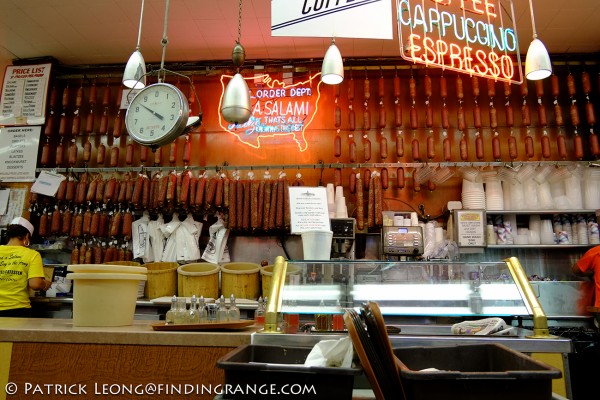
↑ Tasty aged salami at Katz Delicatessen shot at F4.
Another point worth mentioning is that if you want a really portable, compact, one lens X-Pro1 system, this might just be the lens for you. With this lens attached to your X-Pro1 body, you get a camera system that’s just a little bigger than the Fuji X100. Yes, it’s true that you could just buy an X100 if all you need is a wide angle and a great digital body but that might limit you in the future since you won’t ever have the option of interchanging lenses with the X100.
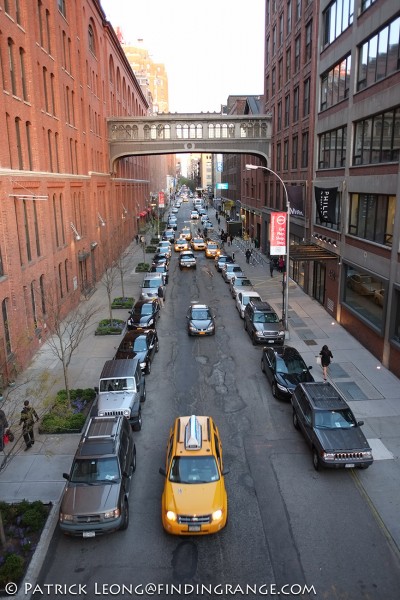
↑ This photo was shot at F2.0.
My verdict for the XF 18mm F2.0 R lens (B&H Photo/Amazon) is that it is a great lens that’s extremely versatile, and quite fun to use. I think that it’s rather hard to build a lens for the X-Pro1 in general because the system as a whole produces such amazing quality for a very decent price. Some will complain that the autofocus is a bit slow or complain about the lack of image stabilization but who cares? The X-Pro1 is all about image quality. The X-Pro1 is an image producing powerhouse, and while the XF 18mm F2 is not quite up there with the XF 35mm F1.4 R lens, it is still an excellent lens that is definitely deserving of being part of the X Series system.

↑ The High Line shot at F4.
I personally really like this lens even though I’m still not a big fan of the 28mm focal length. It performs very admirably, and makes shooting with the X-Pro1 very discreet. In that way, it follows the rangefinder style of shooting, even though the X-Pro1 is not a rangefinder. I was seriously surprised at how much I love using this lens, and how much fun I’ve had with it. It’s a pleasure to use but one should keep in mind that it’s not without its flaws. However, even with it’s imperfections, this lens is still very capable of producing great photographs.
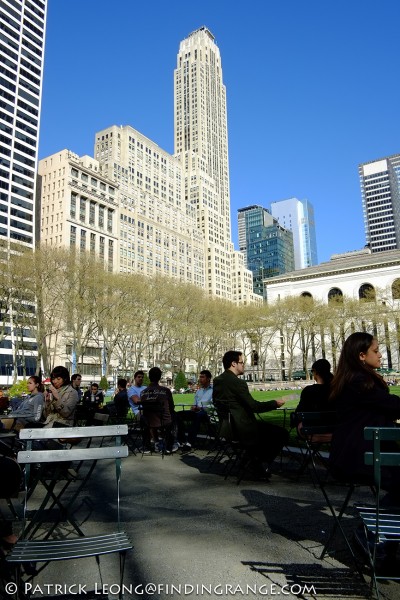
↑ Bryant Park shot at F16.
That’s it for my review. Thanks for taking the time to read it. Please keep in mind that all photos in this review are jpegs that came straight out of the camera with no photoshopping. Comments or questions are always welcomed. If you haven’t yet, you can also check out my Fuji X-Pro1 review, and my XF 35mm F1.4 R lens review. Thanks for stopping by!
If you’re considering purchasing the XF 18mm F2, and my review helped you decide, please help support this site by purchasing from one of the links below. It will not cost anything extra. Thank you for your support!
XF 18mm F2.0 R lens from:

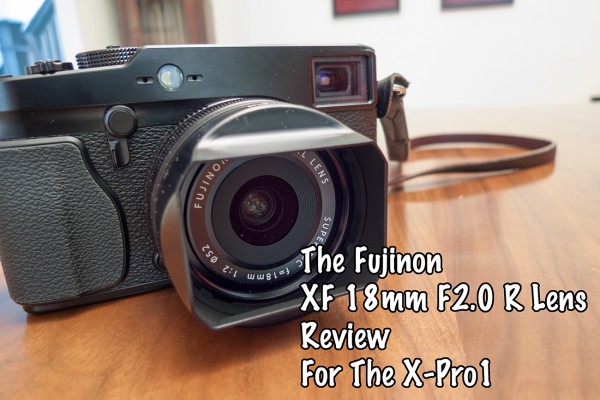
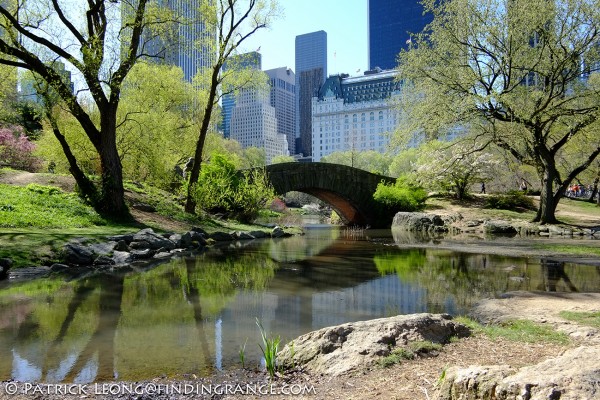
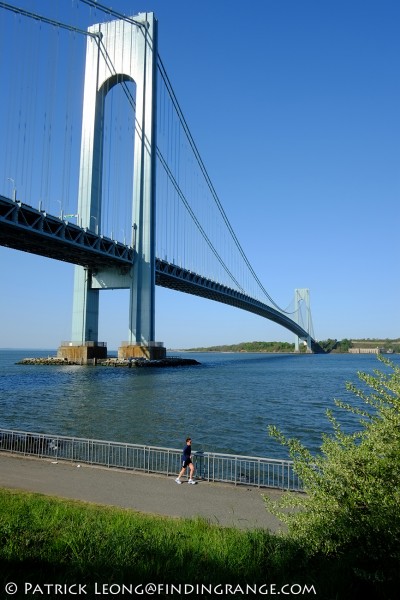
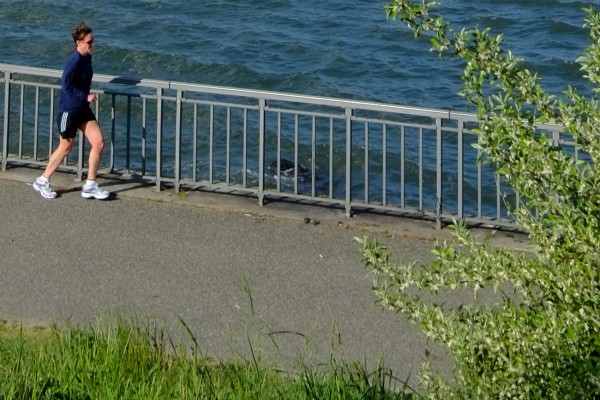
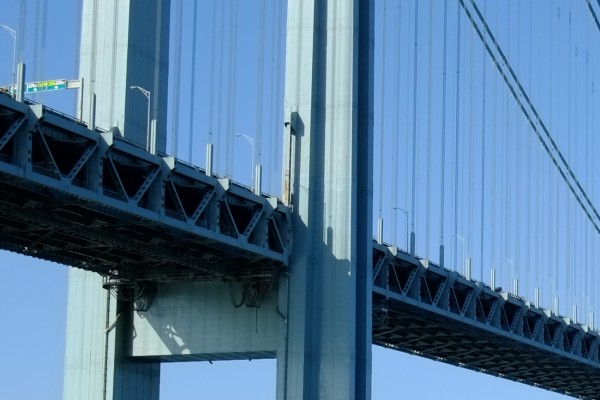
Patrick- just wanted to thank you for taking all the time to review these lenses! I am really enjoying your site. This may be my next lens!
Hi Kari,
That’s really nice of you to say, I sincerely appreciate the comment! Thanks! I’m really glad that you’re enjoying my site, and I hope to hear from you in the near future. If you’re in no rush, you can check out my review of the XF 60mm F2.4 Macro coming soon. I should be getting my copy today or tomorrow. Thanks again, and take care!
Patrick- Yes I am anxiously awaiting your 60mm review. I am on you site every day seeing if it has posted yet…Looking forward to it..K
Hi Karl,
Sorry to keep you waiting :). I had the opportunity to review some new stuff with a short amount of time, which is why I haven’t finished reviewing the XF 60mm F2.4 macro yet. I appreciate your visits, and I’m flattered that you are waiting for my review. I will try not to disappoint! Thanks for always visiting!
Hello
I know it’s an old lens and the 23mm F2 you are reviewing is supposed to be better, but is the 23mm F2 really much better specially for landscape? How can you compare both lenses for border sharpness and bokeh capability?
HI Emile,
Sorry for the late reply! I wish I could give you more info but it’s been a very long time since I used the XF 18mm, and I don’t have one on hand anymore to do a comparison. I did own a copy when it was first released, and I never thought it was a bad lens. It still performed admirably in my eyes but I do feel that the 23mm f2 is better…how much better, I don’t really want to say unless I can do a direct comparison. I will say this; I’m completely content with my results from the XF 23mm, which I will post in my review. Of course, the XF 23mm has other benefits as well: it’s better built, it focuses faster, and it’s weather sealed. I believe it’s considerably cheaper as well. Bokeh is very smooth too.
I hope this helps. Let me know if you have any other questions,
Best,
Patrick